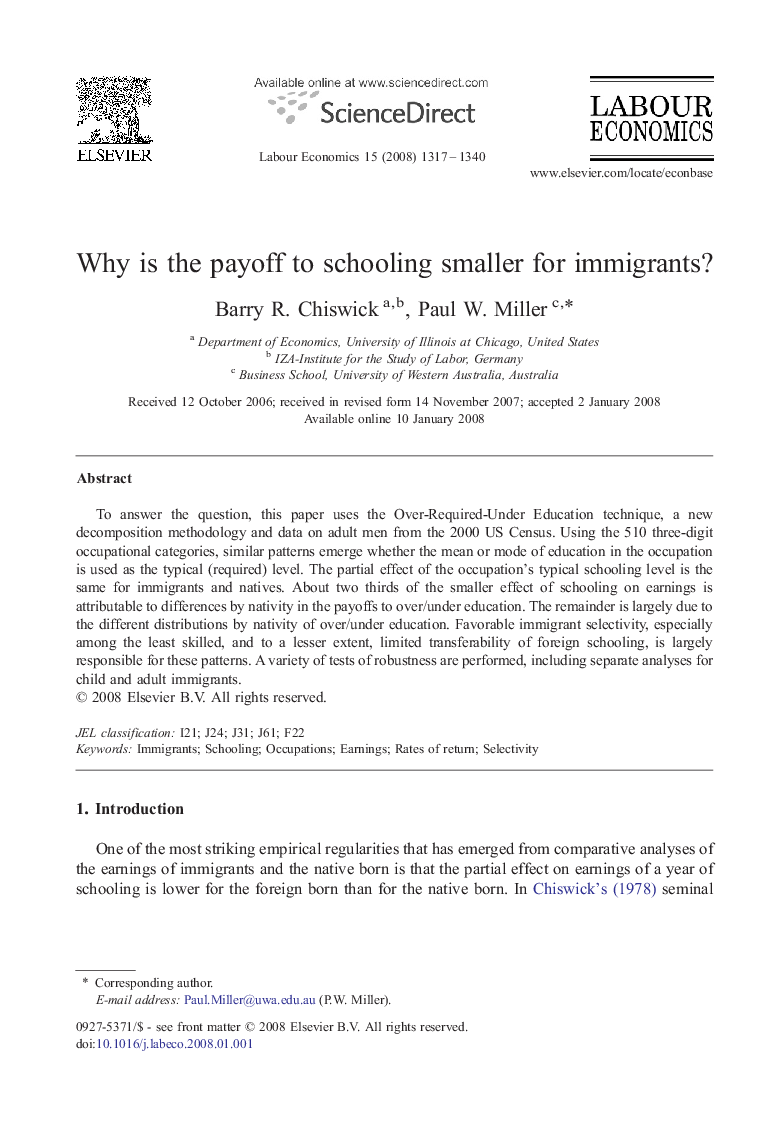| Article ID | Journal | Published Year | Pages | File Type |
|---|---|---|---|---|
| 971723 | Labour Economics | 2008 | 24 Pages |
To answer the question, this paper uses the Over-Required-Under Education technique, a new decomposition methodology and data on adult men from the 2000 US Census. Using the 510 three-digit occupational categories, similar patterns emerge whether the mean or mode of education in the occupation is used as the typical (required) level. The partial effect of the occupation's typical schooling level is the same for immigrants and natives. About two thirds of the smaller effect of schooling on earnings is attributable to differences by nativity in the payoffs to over/under education. The remainder is largely due to the different distributions by nativity of over/under education. Favorable immigrant selectivity, especially among the least skilled, and to a lesser extent, limited transferability of foreign schooling, is largely responsible for these patterns. A variety of tests of robustness are performed, including separate analyses for child and adult immigrants.
